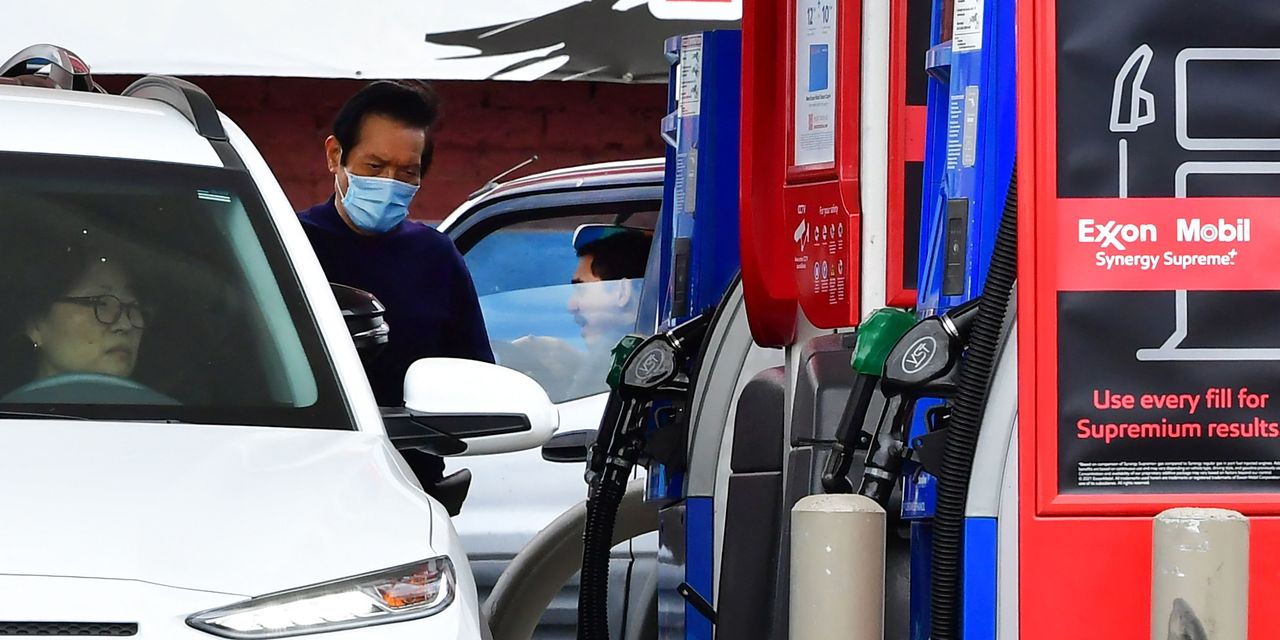Biden says latest Strategic Petroleum Reserve release could cut gas prices 10 to 35 cents per gallon — but some experts worry about long-term costs
President Joe Biden announced Thursday the daily release of 1 million barrels of oil from the country’s reserves for the next six months as a way to bring down gas prices that have been breaking records recently.
This is “a bridge through the crisis” to counter “Putin’s price hike at the pump,” the White House said ahead of Biden’s scheduled remarks, alluding to Russia’s ongoing invasion of Ukraine that’s been roiling the oil markets.
“Your family budget to fill a tank, none of it should hinge on whether a dictator declares war,” Biden said when he announced the release. The immediate impact at the pump is unknown at this point, Biden said, but the release could make gas prices come down between 10 cents and 35 cents per gallon.
It’s the country’s largest-ever release from its oil reserves, the White House said, and it could ultimately mean 180 million extra barrels of oil released to the market through early fall. The plan also calls for increased domestic oil production. Crude oil accounts for almost two-thirds of the price in a gallon of gas, according to U.S. Energy Information Administration
So what does it mean for drivers’ wallets at a time when national gas price averages are more than $4? As of Thursday, the average price was $4.22, which was 11 cents off the record reached earlier this month, according to AAA.
Market volatility makes it tricky to say with great certainty, but the costs savings might be between 5 and 10 cents a gallon in a matter of weeks, said Andrew Lipow, president of Lipow Oil Associates, a Houston, Texas-based consulting firm.
How long prices could stay that way would be an open question, Lipow said. “Some other headline could completely negate the [Strategic Petroleum Reserve] release,” he said.
Assuming everything in the global oil market stayed the same and every single penny of savings was passed along to drivers, the average gallon price could fall by 40 to 50 cents, according to Ed Hirs, an energy fellow and lecturer at the University of Houston. That’s quite a tall order, he acknowledged.
But neither Hirs or Lipow viewed those potential savings estimates as a win for drivers or the country.
Even with nearly 90 million barrels already released from the reserve since July 2020, gas prices have only gone up, Lipow said. “Any of the SPR releases are one-time, feel-good measures to mitigate supply disruption. It does nothing to increase supply on a long-term basis and get more oil out of the ground.”
Whatever the upfront savings could be, Hirs worried what the costs could be down the line if the U.S. needed to look outside its borders to stock up on oil supply. The White House plans to push for more domestic production showed “shocking and alarming misconceptions” about what the domestic oil industry can do right now, Hirs said.
“Russia and OPEC are playing a long game. Biden’s playing a short game,” Hirs said, referring to the Organization of the Petroleum Exporting Countries.
That echoes a point from Patrick De Haan, head of petroleum analysis at GasBuddy.
OPEC and its allies on Thursday said they would be sticking with a plan to raise output in May to a target of 432,000 barrels a day.
Oil prices dropped Thursday as the market digested the news of Biden’s plans. The price on West Texas Intermediate crude for May delivery fell roughly 4% to $103.35.
Biden’s announcement is the latest attempt by lawmakers to address consumer pain at the pump. Pauses on state-level gas taxes are in effect in Maryland and Georgia, and Connecticut’s pause will start in April.
In the prism of short and long term help, some critics say gas tax pauses provide a quick sugar rush that may do little to reduce consumers’ gas costs but will deplete government coffers for road upkeep. (Taxes are 14% of the cost in a gallon of gas, the U.S. Energy Information Administration notes, and generally go toward paying for expenses such as highway maintenance.)
Other states are considering steps to defray fuel costs, like a potential $400 rebate for California drivers. Chicago plans to distribute $150 prepaid gas cards, Mayor Lori Lightfoot said Thursday.
When it comes to the 1 million daily barrel release, it’s not clear yet what the price consequences will be, according to Devin Gladden, a AAA spokesman.
But he noted Thursday that oil prices were dipping in a way they didn’t in the wake of other recent Strategic Petroleum Reserve releases. A key early question is whether oil prices can get to under $100 by Friday, and stay that way, Gladden said. If that’s the case “then drivers will definitely see that reduction at the pump.”
“In order to have a market impact on price, there has to be a sustained effort,” Gladden said. “This definitely sends a signal to the market the U.S. government is looking at this from a long-term solution.”
At a Thursday press briefing on the release, reporters asked senior Biden administration officials for estimates on timetables for driver savings.
One official said the focus was not “short-term price movements.” The focus was meeting the challenge of Russian oil coming off the market.
“We want to address that lack of supply. We know and believe that that will then translate into helping to provide relief to American consumers. We think that this historic release from the Reserve will be an important step in that direction.”
But when it comes to addressing supply shocks, one analyst said the release is ” like putting duct tape on a leaking ship.”
Victor Reklaitis contributed to this report.
[ad_2]
Source

